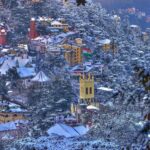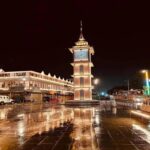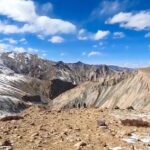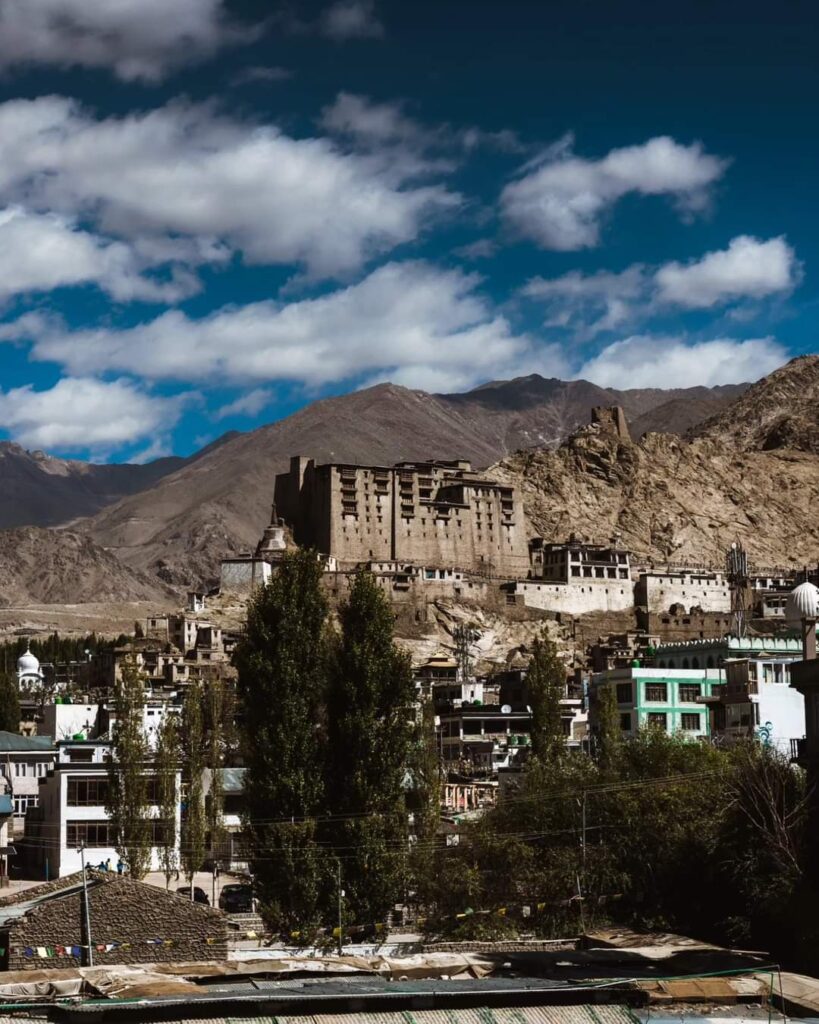
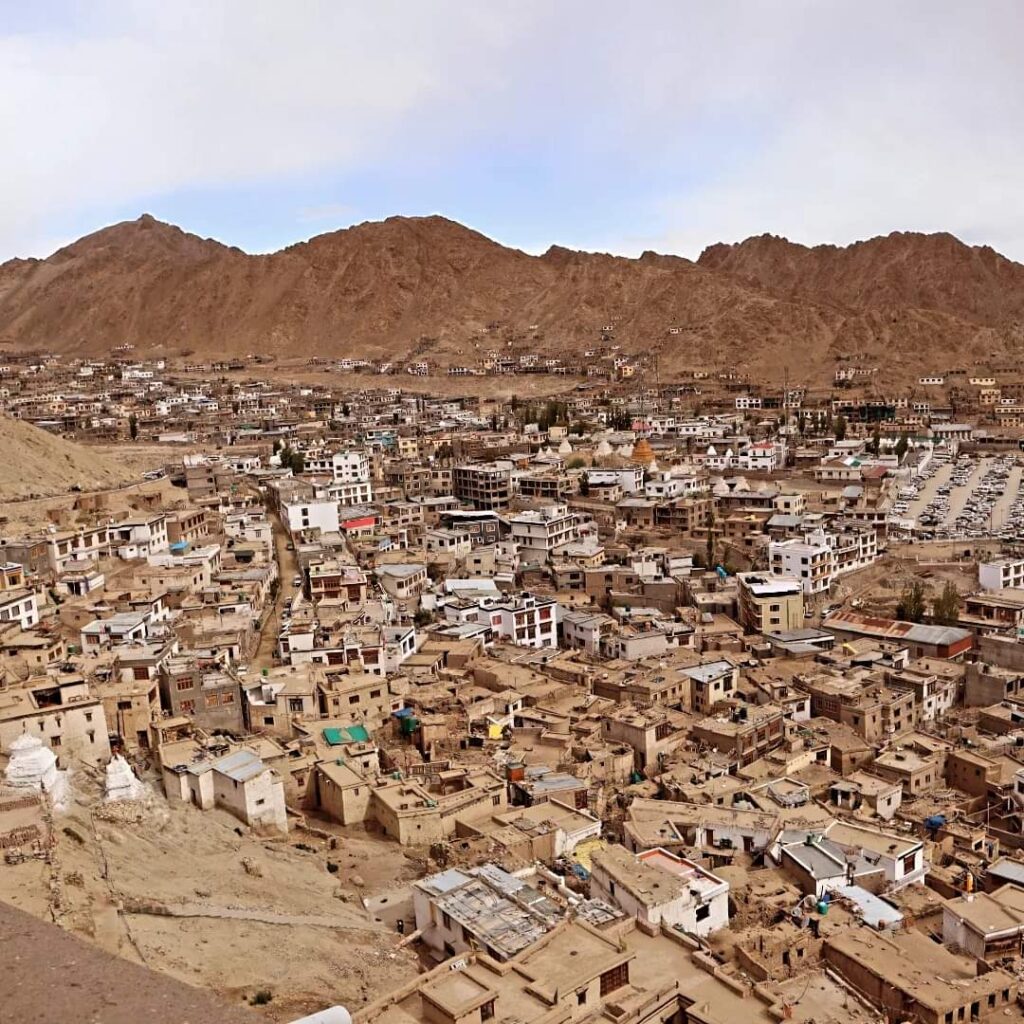
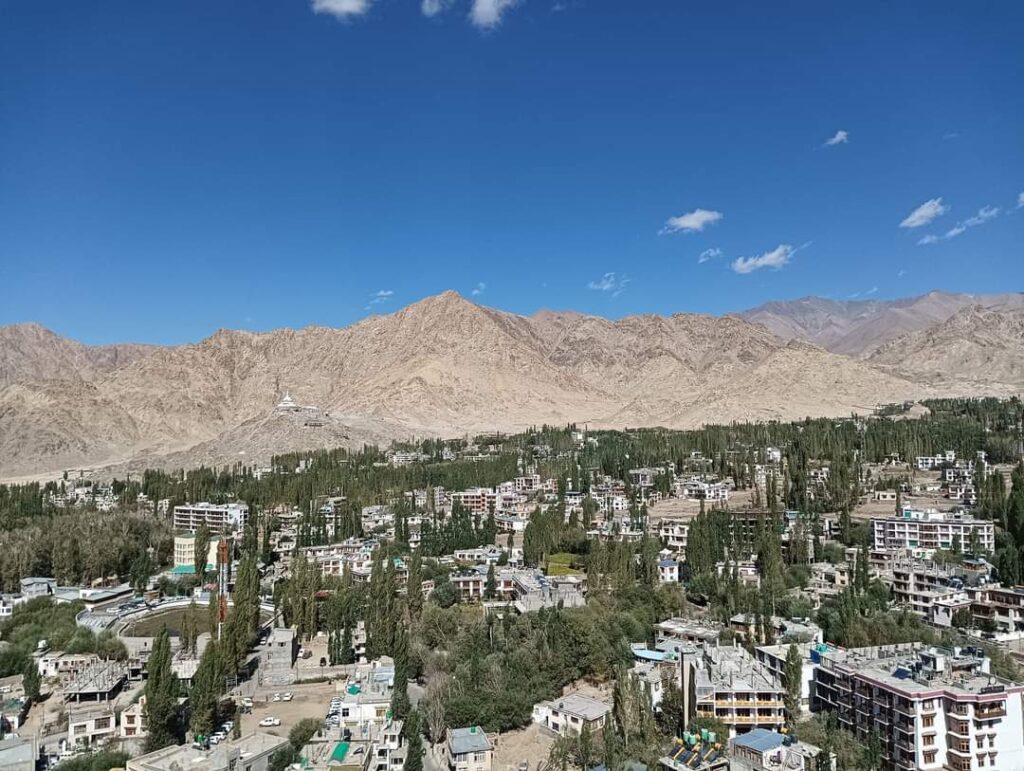
Leh Palace
Leh Palace is a big, beautiful building in Ladakh, India. It was built in the 17th century by the royal family of Ladakh. The palace is nine stories high and is made of mud bricks, stones, and wood.
The palace is located on top of a hill, which gives it a great view of the surrounding mountains and valleys. Inside the palace, there are many different rooms and halls. Some of the rooms were used by the royal family, while others were used for storage or for ceremonies.
The palace is now a museum, and visitors can explore the different rooms and halls to learn about the history of Ladakh and the royal family. There are also many beautiful artifacts on display in the museum, such as jewelry, crowns, and clothing.
location of leh place
Leh Palace is located in Leh, Ladakh, India. It is perched atop Tsemo Hill, which overlooks the city of Leh and the Indus Valley. The palace is about 3 kilometers (2 miles) from the Leh Airport.
To get to Leh Palace, you can take a taxi or auto rickshaw from the city center. The journey takes about 10-15 minutes. You can also walk to the palace, but it is a steep uphill climb.
Once you reach the palace, you will need to climb a flight of stairs to reach the entrance. The palace is open to visitors from 9:00 AM to 5:00 PM, seven days a week.
History of Leh Palace
Leh Palace, also known as Lachen Palkhar Palace, is a former royal palace overlooking the city of Leh in Ladakh, India. It was constructed in the 17th century by Sengge Namgyal, the fifth king of the Namgyal dynasty.
The palace was inspired by the Potala Palace in Lhasa, Tibet, and is a nine-story structure made of mud bricks, stones, and wood. The palace was once home to the royal family of Ladakh, but it was abandoned in the mid-19th century after the Dogra forces took control of the region.
In its early days, Leh Palace was a thriving center of culture and learning. The palace was home to a library of over 30,000 books, and was also a center for Buddhist scholarship. The palace was also a popular tourist destination, and visitors from all over the world came to see its grandeur and beauty.
However, the palace fell into disrepair after the royal family abandoned it. The palace was damaged by earthquakes and floods over the years, and much of its interior was looted. In the late 19th century, the British government took over the palace and used it as a military garrison.
In 1962, the Archaeological Survey of India (ASI) took over the palace and began to restore it. The ASI has done a remarkable job of restoring the palace to its former glory, and it is now one of the most popular tourist attractions in Ladakh.
Today, visitors can explore the palace’s many halls and rooms, which offer stunning views of the surrounding landscape. The palace also houses a museum that houses a collection of artifacts from the Namgyal dynasty, including jewelry, crowns, and ceremonial dresses.
Architecture of leh palace
Leh Palace is a magnificent example of Tibetan architecture, with a blend of Mughal influences. The nine story structure is made of mud bricks, stones, and wood. The palace is topped with a golden dome, and the walls are decorated with colorful murals. The interior of the palace is just as impressive, with its ornate carvings and intricate woodwork.
One of the most striking features of Leh Palace is its location. The palace is perched atop Tsemo Hill, which offers panoramic views of the Indus Valley and the snow capped peaks of the Himalayas. The palace is also surrounded by a massive stone wall, which was built to protect it from invaders.
The palace complex is divided into three main sections, the royal chambers, the prayer halls, and the service quarters. The royal chambers are located on the upper floors of the palace and were used by the royal family. The prayer halls are located on the lower floors of the palace and were used for religious ceremonies. The service quarters were located on the ground floor of the palace and were used by the servants.
The palace is entered through a grand gateway that is flanked by two lions. The gateway leads to a courtyard, which is surrounded by the palace buildings. The courtyard was used for royal gatherings and ceremonies.
The royal chambers are the most ornate and lavishly decorated part of the palace. The chambers are decorated with colorful murals, intricate wood carvings, and precious stones. The royal chambers also have balconies that offer stunning views of the surrounding landscape.
The prayer halls are located on the lower floors of the palace and are more austerely decorated than the royal chambers. The prayer halls are home to a number of Buddhist statues and paintings. The prayer halls were also used for religious ceremonies and debates.
The service quarters were located on the ground floor of the palace and were used by the servants. The service quarters are less ornate than the royal chambers and prayer halls, but they are still well built and spacious.
Leh Palace Museum
The Leh Palace Museum is a museum housed within the Leh Palace, a former royal palace in Leh, Ladakh, India. The museum was established in the 1980s by the Archaeological Survey of India (ASI).
The museum houses a collection of artifacts from the Namgyal dynasty, which ruled Ladakh for over 400 years. The collection includes a variety of objects, such as jewelry, crowns, ceremonial dresses, weapons, and armor. The museum also has a collection of Buddhist statues and paintings.
The museum is divided into several sections, each of which focuses on a different aspect of the Namgyal dynasty. One section of the museum is dedicated to the history of the dynasty, while another section focuses on the royal lifestyle. The museum also has a section on the culture and religion of Ladakh.
The Leh Palace Museum is a great place to learn about the history and culture of Ladakh. The museum’s collection is well-curated and informative, and the museum staff is knowledgeable and friendly.
Here are some of the exhibits that you can see at the Leh Palace Museum:
- A collection of jewelry, crowns, and ceremonial dresses worn by the royal family of Ladakh.
- Weapons and armor used by the Ladakhi army.
- Buddhist statues and paintings from the Namgyal period.
- Artifacts related to the culture and religion of Ladakh.
- The Leh Palace Museum is a must-visit for anyone interested in the history and culture of Ladakh. It is a great place to learn about the Namgyal dynasty and the rich heritage of the region.
Local Legends and Myths about leh palace
There are many local legends and myths associated with Leh Palace. Here are a few of the most popular ones:-
- The legend of the talking lion: One legend says that there was once a talking lion that lived in the Leh Palace. The lion was said to be the guardian of the palace, and it would roar to warn the residents of any impending danger.
- The myth of the hidden treasure: Another legend says that there is a hidden treasure buried somewhere in the Leh Palace. The treasure is said to have been hidden by the royal family during the invasion of the Dogra forces. Many people have tried to find the treasure, but no one has been successful so far.
- The ghost of the princess: One of the most popular legends about Leh Palace is the ghost of the princess. The legend says that there was once a princess who lived in the palace. She was said to be very beautiful and kind. One day, the princess fell in love with a commoner. The king was furious when he found out about the affair, and he ordered the princess to be locked in a tower. The princess was heartbroken, and she died of grief a few days later. It is said that the ghost of the princess still haunts the palace to this day.
- These are just a few of the many local legends and myths associated with Leh Palace. The palace is a place that is steeped in history and mystery, and it is no surprise that there are so many stories about it.
View from the Leh Palace
The view from Leh Palace is one of its most captivating and breathtaking features.
- Panoramic Vistas: Describe the expansive, panoramic views that can be enjoyed from the palace. Mention the 360-degree view that encompasses the surrounding Himalayan mountain ranges and the town of Leh itself.
- Himalayan Peaks: Identify and name the prominent Himalayan peaks that are visible from the palace. Some of the famous ones include Stok Kangri, Zanskar Range, and Ladakh Range.
- Sunrise and Sunset: Emphasize the beauty of watching the sunrise or sunset from the palace. Mention the dramatic colors and the serene atmosphere during these times.
- Changing Light: Discuss how the view changes with the shifting light throughout the day. The way the landscape transforms with the angle of the sun can be quite mesmerizing.
- Photography Opportunities: Share tips for capturing the stunning vistas through photography. Discuss ideal times of day, camera settings, and popular vantage points within the palace for photography.
- Seasonal Variations: Explain how the view changes with the seasons. In winter, the landscape may be covered in snow, while spring and summer offer a lush and vibrant panorama.
- Local Landscape Features:Point out any unique landscape features that can be observed from the palace, such as the winding Indus River, terraced fields, and the confluence of the Indus and Zanskar rivers.
- Clear Skies and Stars: Mention the clear, unpolluted skies that make Leh an excellent location for stargazing. On clear nights, the stars and constellations can be quite spectacular.
- Impact on Visitors: Share personal experiences or anecdotes from visitors who were awed by the view from Leh Palace. This can help readers understand the emotional impact of the scenery.
sunrise and sunset from Leh Palace
Leh Palace is a magnificent sight at any time of day, but it is especially stunning at sunrise and sunset. The palace is located on Tsemo Hill, which offers panoramic views of the Indus Valley and the snow capped peaks of the Himalayas.
At sunrise, the sky over Leh Palace is ablaze with color. The snow capped peaks of the Himalayas turn a golden hue, and the Indus Valley is bathed in a warm light. The palace itself is silhouetted against the sky, creating a truly unforgettable sight.
At sunset, the sky over Leh Palace is once again ablaze with color. The sky turns a fiery red, and the clouds are painted with hues of orange and purple. The palace is illuminated by the setting sun, and it casts a long shadow over the valley below.
If you are visiting Leh, be sure to make time to watch the sunrise or sunset from Leh Palace. It is an experience that you will never forget.
Here are some tips for enjoying the sunrise and sunset at Leh Palace:
- Arrive early to get a good spot. The palace can get crowded at sunrise and sunset.
- Bring your camera to capture the stunning scenery.
- Be prepared for the cold. The mornings and evenings in Leh can be quite cold, especially in the winter months.
- Be respectful of the palace and its surroundings.
- Leave no trace. Pack out all of your trash.
Conclusion
Leh Palace is a magnificent example of Tibetan architecture and a must visit destination for anyone traveling to Ladakh. The palace offers stunning views of the surrounding landscape and houses a museum with a collection of artifacts from the Namgyal dynasty, which ruled Ladakh for over 400 years.
The palace is also steeped in history and mystery, with many local legends and myths associated with it. Visitors can learn about the palace’s rich history and culture at the museum, or they can simply enjoy the stunning views and soak up the atmosphere of this unique and fascinating place.
Whether you are interested in history, culture, or simply stunning scenery, Leh Palace is a place that has something to offer everyone. It is a must-visit destination for anyone traveling to Ladakh.
Discover the Magic of Kashmir’s Natural Beauty in Our New Blog – An Adventure You Can’t Miss! THIKSEY MONASTERY , LEH ~ LADAKH
